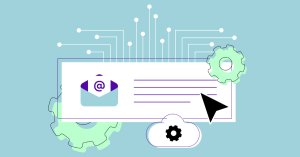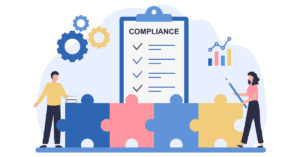It’s never been easier for marketers to target their audience in a location that almost guarantees engagement. That location is on a device held in the palm of their customers’ hands, and according to a report in The Atlantic, 21% of people would rather go without their shoes than put that device down. Of course, we’re talking about the smartphone.
It’s hard to imagine a technology so hardwired into our psyche that almost every modern marketing channel attempts to drive engagement through it. Even the humble billboard poster encourages passers-by to pull out their smartphones and scan QR codes, essentially turning a static, analog marketing channel into a trackable, digital medium.
But if you’re looking to harness the true power of mobile marketing, you need to look at the native applications that have called the smartphone home since day one – email and SMS.
Native Applications
If you remember life before the smartphone, the ability to access SMS and email on the go was probably among the main reasons why you bought an iPhone or Android device, or even a BlackBerry (remember them?) in the first place. For those not so long in the tooth — it’s hard to imagine life without these communication channels. Of course, native technologies, primarily social media, have come along and fought for dominance in the mobile environment. However, while these channels provide compelling opportunities to communicate with, entertain, and market to a vast audience, compared to email and SMS, they are less direct, often less targeted, and easier to ignore. It could also be suggested that many of these social channels are just iterations of the old email or SMS inbox with added bells and whistles.
A Brief History of Email and SMS
If there is such a thing as a marketing historian, they’ll surely divide their marketing timelines based on life before and after the smartphone.
If you’ve ever doubted the persistence and power of email and SMS, consider the facts. The first email was sent in 1971 — meaning it’s probably older than you. Technology and marketing didn’t move so fast in those days. It took another seven years before the first email marketing message was sent. In what could be described as technology’s Wild West era (those hedonistic pre-GDPR days), the first email marketing send could have also been accused of being the first spam email. It took another 18 years before services like Hotmail popularized email for the masses, and it wasn’t until 2004 that Google launched Gmail, which currently has 1.8 billion active users.
SMS is a relative newcomer compared to email. The first SMS message was sent in 1992 by an engineer at Vodafone wishing his colleague “Happy Christmas.” Nokia introduced the SMS feature to the world, But it wasn’t until 1999 that SMS messages could be exchanged across multiple networks, popularizing the service.
If this all sounds like ancient history, it really is in terms of the digital media landscape. But when you consider how many digital channels have exploded onto the scene in recent years only to implode within a matter of months, it is a safe bet to suggest that email and SMS are a lot more resilient than many rival technologies.
Email and SMS Marketing: Common Ground
At first glance, email and SMS marketing have much in common. They are both permission-based marketing strategies, meaning marketers must actively seek the recipients’ permission before sending targeted campaigns and provide appropriate measures for subscribers to remove themselves from any marketing lists should they no longer wish to be contacted. As such, they are both considered retention marketing channels, meaning they should deliver a much higher engagement rate (including return on investment) than more anticipative acquisition marketing strategies, such as paid search, TV, radio, or print advertising.
Email and SMS also offer marketers an incredibly agile communication channel. Email and SMS campaigns can be deployed equally successfully as part of an ongoing marketing automation or drip campaign or sent out as an urgent, single-message call to action.
Despite these similarities, it doesn’t mean that email and SMS marketing should be treated the same.
Both email and SMS marketing have unique advantages and may serve different purposes in any comprehensive marketing strategy. Conducting a quick SWOT analysis is always a good idea to understand how to deploy each channel effectively.
Email Marketing
So, what are email marketing’s strengths, weaknesses, opportunities, and threats? Let’s consider the following:
Strengths:
- Reach and Speed: Email marketing allows you to reach a large audience of engaged subscribers quickly and efficiently. Because email design is template-driven or even text-based, a campaign can be created and sent almost as quickly as you can produce its content. This means you can reach a highly engaged audience with campaigns that allow you to take advantage of opportunities as they present themselves.
- Customization: Email marketing campaigns are highly customizable, allowing for personalized content based on individual or segmented subscriber behaviors and preferences. You might think of email marketing as a “bulk” marketing solution, but with a few simple tricks, your sends will speak directly to individual subscribers.
- Rich Content: Email campaigns can include various media, including detailed text, images, videos, and links, to drive further engagement. If you’ve got a story to tell or a product to sell, email marketing is often the first sentence of a more engaging conversation.
- Analytics: Email and marketing automation platforms provide detailed analytics on open rates, click-through rates, and conversion rates, enabling effective campaign optimization. Gone are the days when you didn’t know how effective your marketing was. Any engagement attributed to an email marketing campaign can be quickly determined, highlighting the medium’s incredible potential for delivering an industry-beating return on investment.
- Extremely Low Costs: Although there is no such thing as free marketing, email marketing comes pretty close. When you compare the success of retention marketing strategies like email to more expensive acquisition marketing strategies, you’ll wonder why you don’t prioritize email more.
Weaknesses:
- Spam Complaints: Poorly executed or targeted email campaigns can be flagged by subscribers as spam, end up in spam folders, and reduce visibility and engagement. The best way to avoid your email campaigns being viewed as spam is only to deliver timely, relevant, and engaging sends you would personally welcome as a subscriber.
- Email Fatigue occurs when email subscribers receive too many poorly targeted or poorly written emails, leading to lower open rates and unsubscriptions. The same rules apply to email fatigue as they do to spam complaints. Keep your campaigns relevant, and you’ll keep your subscribers engaged.
- Design Challenges: Emails may be rendered differently across various devices and email clients. This may affect the visual appeal and user experience of your campaigns. The email marketing experts at emfluence can recommend tools and techniques to ensure your email sends arrive in your subscribers’ inboxes as intended.
Opportunities:
- Marketing Automation: By utilizing automated workflows, marketers can send more timely and targeted email campaigns. Email marketing is no longer a broadcast tool delivered at a time to suit the marketer. Marketing automation helps deliver the right message to the right person at the right time.
- List Segmentation: This process helps marketers improve email targeting by segmenting email lists based on subscriber demographics, behavior, or preferences. By carefully segmenting your lists, you’ll be able to send more targeted campaigns to the right people, dramatically improving engagement and retention rates.
- Integration: Email marketing technologies like the emfluence Marketing Platform integrate seamlessly with other tools in your MarTech stack, including CRM systems, for enhanced cross-department visibility and greater efficiency.
Threats:
- Regulatory Compliance: Stricter regulations, including GDPR, require marketers to adhere to various international privacy laws. Remember, regulatory compliance is only a threat if you don’t play by the rules. Your technology partners should help you keep on the straight and narrow.
- Inbox Competition: Email inbox competition is intense, with other businesses vying for attention. This will be particularly true during peak sales periods like the Holidays. You can beat the threat posed by inbox competition by crafting emails that your subscribers want to read. This process always starts with a compelling subject line.
SMS Marketing
Now let’s do the same SWOT analysis for SMS marketing.
Strengths:
- High Open Rates: SMS messages are concise, delivered directly to the recipient’s phone, and very hard to ignore. Because of this, SMS marketing campaigns boast exceptionally high open rates, often within minutes of delivery.
- Immediate Engagement: SMS can be highly effective for time-sensitive promotions, reminders, and customer updates. This makes SMS perfect for many organizations, including healthcare providers, charities and non-profits, hospitality and entertainment companies, and ecommerce stores.
- Network Delivery: SMS messages are delivered via mobile networks and do not require data plans or wifi access. This makes them accessible to a broader range of people across various geographic locations and demographic groups.
Weaknesses:
- Text Length: While messages can be nearly 2,000 characters long, each SMS send is limited to 160 characters (70 when emojis are used). This can restrict message creativity, but it is the perfect medium for marketers who just want to get to the point.
- Costs: SMS campaigns often incur higher costs per send than other retention marketing strategies, such as email marketing.
Opportunities:
- Campaign Personalization: Like email marketing, marketers can leverage customer data for more personalized SMS campaigns. Remember, nothing will push recipients to unsubscribe from your SMS campaigns faster than irrelevant campaigns.
- Integration: Again, just like email, SMS can be integrated with your organization’s wider Martech stack, enabling a more coordinated, multi-channel marketing strategy, improved cross-departmental visibility, and greater efficiency.
Threats:
- Opt-out Rates: Subscribers can easily opt out of SMS messages, impacting ongoing engagement. The threat of opt-outs can be reduced by ensuring all messages are timely, relevant, and engaging.
- Network Issues: Network issues or carrier restrictions can impact SMS deliverability, resulting in delayed or unreceived campaigns. Like email, SMS sends should be monitored for engagement, and lists should be regularly cleansed to ensure maximum efficiency.
Email or SMS: What to send?
While email and SMS marketing are powerful tools, they have distinct advantages and challenges. Which strategy you use will depend on your marketing objectives, target audience, and campaign nature.
In the ideal world, you’ll want to deploy the right strategy at the right time, and the emfluence Marketing Platform can certainly help you do that.
To learn more about how emfluence can help you combine the power of email and SMS marketing, contact one of our marketing experts today at expert@emfluence.com.


